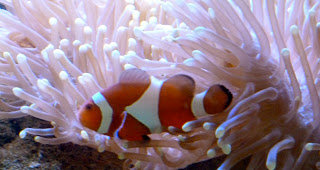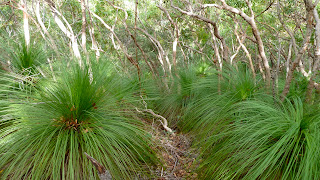Climate change nonsense
Recently, silly UK Education Minister Michael Gove – and I'm sorry but you can't expect a man with such a funny little face to be taken seriously in the classroom or on the news desk – proposed taking climate change and sustainable development out of the National Curriculum geography syllabus for the under-14s. There followed much debate about whether the topic belongs in geography or chemistry. But shouldn't this critically important subject also be included in Life/Philosophy/Society/Morality discussion groups, whatever that lesson is called these days.
Meanwhile, back in Oz, pity the receptionist at Greg Combet's newly reshuffled department who has to answer the phone with, 'Good afternoon, Department of Industry, Innovation, Climate Change, Science, Research and Tertiary Education, this is Noleen'. Mr Combet used to be in charge of Climate Change and Energy Efficiency. (Energy Efficiency now merges with Resources, Energy and Tourism. Tourism? Am I missing a link?) These two seem like obvious bedfellows to me, since reducing carbon emissions should be the most urgent task of all governments. And I do wonder about the potential for conflict of interest if the Minister is being lobbied by mining and energy industry leaders while wearing his Industry hat and then has to turn his attention to limiting their growth in order to achieve a sustainable economy framework, hence reducing those emissions.
Recycling trouble in the Territory
Australians consume 14 billion drinks in cans or bottles a year, yet recycle fewer than half of the containers. South Australia has dealt with this problem for years by adding a 10c/container 'deposit' that's refunded if the container is recycled. Recycling rates in the state are double what they are in the rest of the country as a result. The Northern Territory recently tried to introduce a similar scheme but incurred the wrath of Coca Cola who took them to court, and won, regrettably.
I won't go into the minutiae of the legal ruling, (you can read all about it at http://www.crikey.com.au/2013/03/06/crikey-clarifier-what-does-coke-have-to-do-with-nt-recycling/), but the case emphasises the need for a national container deposit scheme. We cannot continue to protect the profits of massive multinationals, however unintentionally, or the right to govern of individual states for that matter, if a national or global issue needs tackling firmly and urgently.
 |
| Getting away from it all – a can on Whitehaven Beach |
This week Arrow Energy was granted approval by the Queensland Government for it's nearly-600 km pipeline to transport coal seam gas from the Bowen Basin to Curtis Island for processing into liquified natural gas prior to export. Tony Knight of Arrow Energy was coy on ABC 612 Brisbane about exactly how much the project would generate for Arrow or the Government, because he is Vice President of Exploration, you see? Construction will cost $1 billion and provide 700 jobs, although very few people will be required once the pipeline is in operation.
Since we're talking figures, the Great Barrier Reef brings in $6 billion a year in tourism for the nation. Once all the proposed coal- and gas-exporting projects go ahead for Curtis Island, however, one wonders if that figure will be in jeopardy as the risks of ships damaging the Reef and spilling into the ocean increases proportionately. Not to mention the further messing up of Gladstone Harbour.
Arrow Energy is owned jointly by Shell and PetroChina. In 2003 Shell made a commitment not to develop oil and gas in World Heritage Areas. Changing their name to Arrow doesn't obscure the fact that they are breaking that promise in Australia.
Seeing red
Hundreds of thousands, if not millions, of dead prawns have been washed up on the coast of Chile south of Santiago. Something must surely be amiss, right? Right. 'Allegedly', heated water was released by two nearby power plants. Has an environmental crime been committed? This being South America, will the culprits be brought to a level of justice commensurate with the effects of their actions? Will we, in fact, ever hear any more about this story? Is justice ever done in such instances? BP in the Gulf springs to mind.
And bankers across the globe. Some legal eagles will argue that they committed no crime as such. But ask millions of people whose lives have been compromised or even destroyed by bankers' greed what they think. I once suggested that if communities wanted to stop large-scale mining development they should ensure that their government representatives change the law. As all nations have to grapple with the massive global issues that are climate change, population growth and food production, expedient methods of changing laws, nationally and internationally, will have to come about. Many old systems are redundant, and the sooner more citizens recognise this the better. Have a listen to Bob Geldof...
http://www.abc.net.au/lateline/content/2013/s3724453.htm.
Keeping trees
Since the LNP was elected in Queensland a year ago, it's been steadily undoing a decade of Labor environmental law, as it promised it would. You would think the folly of land clearance throughout Australian history – and I'm including Aboriginal 'land management' in that indictment – would be understood by now. But no. The State Government have lifted restrictions on land clearance on leasehold and freehold properties that were originally imposed as part of protective Natural Vegetation legislation.
Farmers have long complained about being prevented from 'developing their assets', principally by tearing down trees in order to put the land under the plough. I have just read a book called Back from the brink: how Australia's landscape can be saved, by Peter Andrews. He has worked the land all his life; travelled around this continent observing landforms; studied farming and livestock practices in other countries; and, through trial and error, worked out for himself the best ways of maintaining the fertility of the Australian landscape and conserving its precious water. Trees, in fact any vegetation, including the worst weeds, are vitally important to both of these in a hugely interrelated system of biodiversity.
I know practically nothing about farming this land, but I know this book should be read by all those who do. I thought the book would be dry and difficult to read; in fact, it was fascinating, enlightening and well written. If you are a farmer and confident of your methods, you may be surprised by this book; if you are a farmer struggling with salinity, irrigation, increasing production costs and decreasing yields, you may learn a a lot from Peter Andrews. Then you can tell the relevant departments in the Queensland and Federal governments.









































































